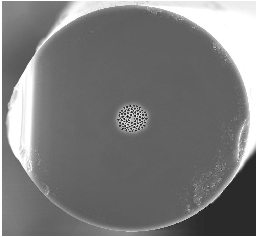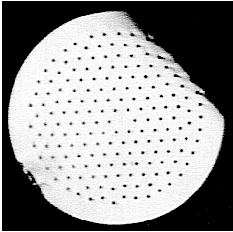Microstructured fibres: moulding the properties of light
Tanya M. Monro
Optoelectronics Research Centre, University of Southampton, UK
Tel: +44(0) 23-8059-2696 Fax: +44(0) 23-8059-3142 Email: tmm@orc.soton.ac.uk
ABSTRACT:
The combination of wavelength-scale features and geometric flexibility offered
by microstructured or holey optical fibres (HFs) leads to a significantly
broader range of optical properties than is possible in conventional optical
fibres (see the examples in Figure 1). These properties include single-mode
guidance at all wavelengths, novel dispersion properties including broadband
dispersion flattening and anomalous dispersion at visible wavelengths, mode
size tailoring over three orders of magnitude, and many more. The optical
properties of holey fibres are determined by the size, shape and locations of
the air holes that define the cladding region. HFs can be made either from a
single material (eg pure silica) or can be doped, which allows active fibre
devices to be made.
Progress in this rapidly emerging technology will be reviewed, ranging
from modelling and fabrication through to applications and
practical devices.


Some typical holey fibre profiles: (left) A holey fibre with a small
core (1.5 microns in diameter) provides tight mode confinement and
enhanced nonlinearity (right) A large mode area holey fibre (core diameter
approx 15 microns) for high power delivery.

